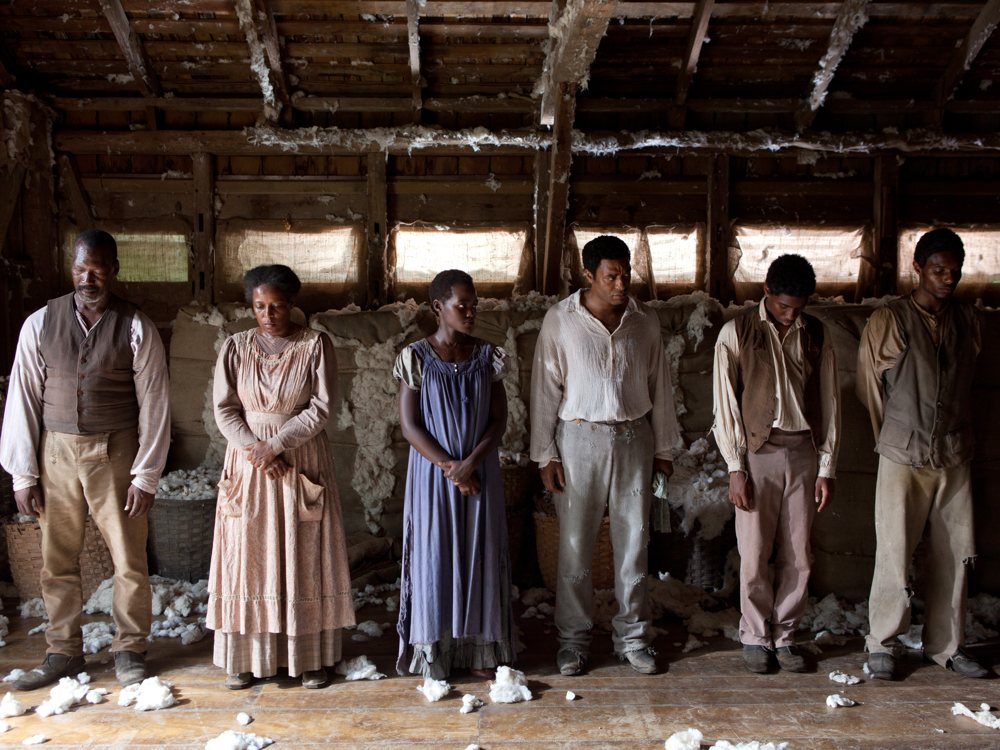50. The Immigrant (2013, James
Gray)
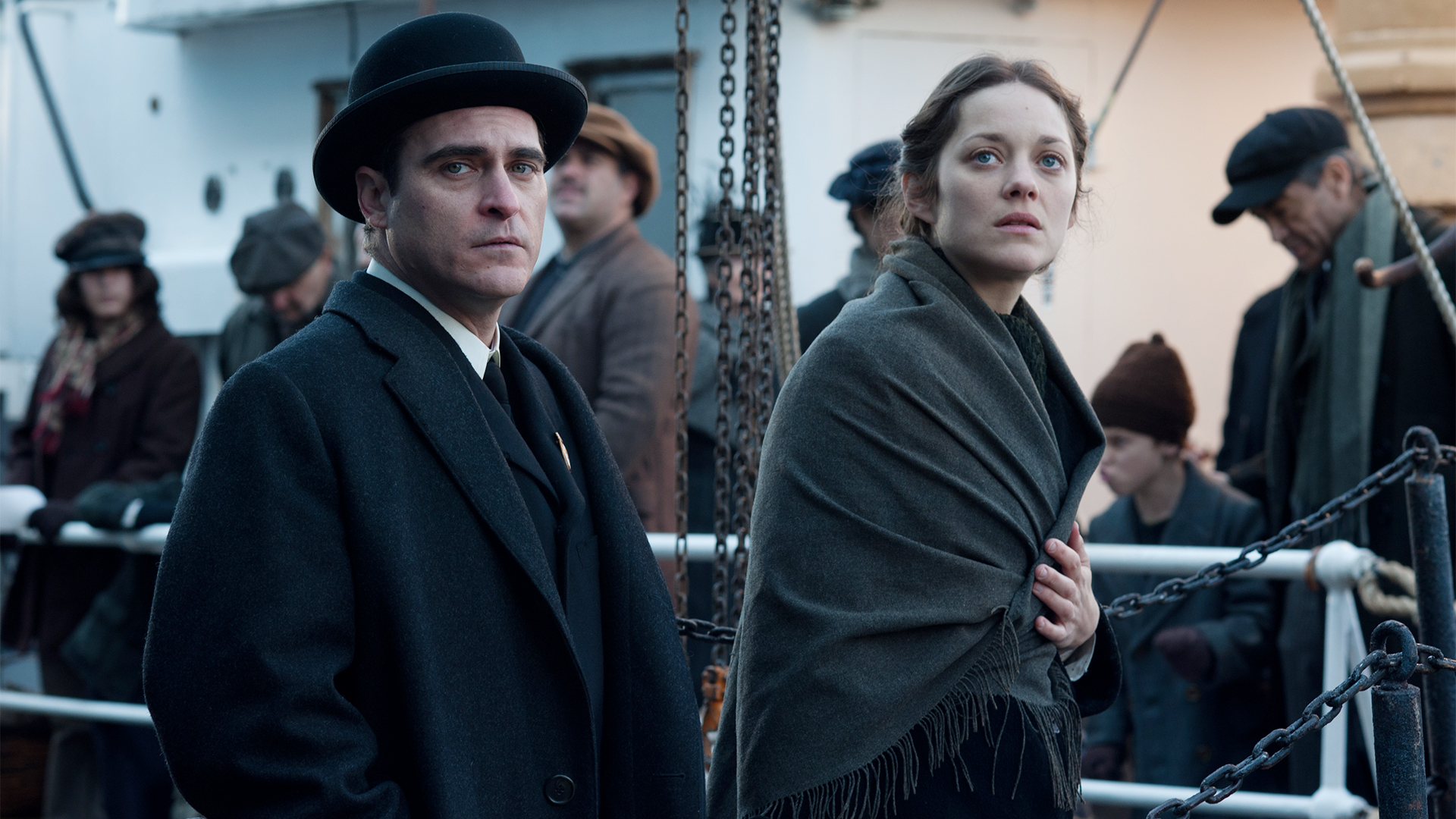 An
understated, human piece by James Gray that has seemingly been purposefully
hidden away since its premier in Cannes. One of the most powerful final images
you are likely to see in cinema this decade.
An
understated, human piece by James Gray that has seemingly been purposefully
hidden away since its premier in Cannes. One of the most powerful final images
you are likely to see in cinema this decade.
49. An Oversimplification of Her
Beauty (2012, Terrence Nance)
A
kaleidoscope of colours, themes and images, Terrence Nance’s breakout feature
is a unique film that is simultaneously personal and encompassing. Criminally
under shown, however, did get a decent run at the BFI as part of their
Afro-futurism season.
48. Cloud Atlas (2012, Tom Tywker,
Andy Wachowski, Lana Wachowski)
Cloud
Atlas may be slightly overblown at times, but Tywker and the Wachowski siblings
take on grand themes, and prove themselves to be unafraid to aim high and fail.
Other directors often withdraw with huge budgets ($100mil plus), but instead we
see risks taken. Something that is far too regularly missing in high budget
films.
47. Computer Chess (2013, Andrew
Bujalski)
 For
someone who was at the beginning of the main independent American film movement
of the 2000s, Bujalski has shown himself to be one of the most willing to move
into something altogether different. Computer
Chess is something that is altogether different, weird and unique. Bujalski
takes something that could have been incredibly mundane, and makes it gripping
visually and thematically. As well as leaving as at the end questioning
everything that came previously. Bujalski has proven himself to be one of the
great independent voices.
For
someone who was at the beginning of the main independent American film movement
of the 2000s, Bujalski has shown himself to be one of the most willing to move
into something altogether different. Computer
Chess is something that is altogether different, weird and unique. Bujalski
takes something that could have been incredibly mundane, and makes it gripping
visually and thematically. As well as leaving as at the end questioning
everything that came previously. Bujalski has proven himself to be one of the
great independent voices.
46. Mommy (2014, Xavier Dolan)
I’ve
never really understood the hate for Dolan beyond the fact he is extremely
self-assured in his film-making style. Criticism of style over substance seemed
to have been answered however with his most recent feature. Dolan uses his self
imposed visual limitations to full affect, and supports it with an honest and
powerfully acted story.
45. Submarine (2010, Richard
Ayoade)
Ayoade’s
debut feature seemingly came out of nowhere, and became an early addition to
the feeling that British cinema was starting to lean east towards Europe,
rather than America. Ayode litters his film most obviously with the French New
Wave, romanticism and comedy, while pulling in the Britishness of the whole
thing by placing it in Swansea. A bold debut.
44. Once Upon a Time in Anatolia
(2011, Nuri Blige Ceylen)
Ceylan
shows in Once Upon a Time in Anatolia that
digital film-making has the potential to create images as powerful and haunting
as anything shot on film. Although perhaps not his strongest film, Ceylan still
is more often than not, head and shoulders above any other European director.
43. Wuthering Heights (2011, Andrea
Arnold)
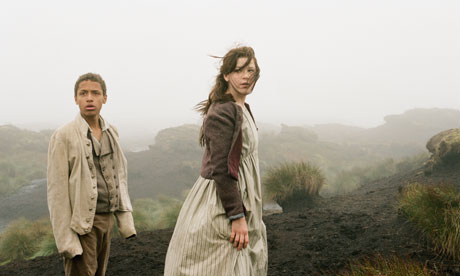 Andrea
Arnold shows what it is to truly adapt a well known book, and make it personal
and unique to themselves. This Wuthering
Heights could only ever belong to Arnold, who strips down the dialogue to
its bare bones, and uses the photography of Robbie Ryan (one of the stand-out
cinematographers so far this decade) to create a haunting, powerful collage of
images and sounds.
Andrea
Arnold shows what it is to truly adapt a well known book, and make it personal
and unique to themselves. This Wuthering
Heights could only ever belong to Arnold, who strips down the dialogue to
its bare bones, and uses the photography of Robbie Ryan (one of the stand-out
cinematographers so far this decade) to create a haunting, powerful collage of
images and sounds.
42. Moonrise Kingdom (2012, Wes
Anderson)
Wes
Anderson’s films are easy to hate, ‘twee’ being an obvious synonym for his
work. But what Anderson does, that other similar directors lack, is the ability
to make films that can connect with its viewers on a basic level. Moonrise Kingdom, besides being funny,
fantastically written and acted, is simple story of first love. Anderson knows
when to pull back, where others may push forward.
41. Spring Breakers (2012, Harmony
Korine)
Selena
Gomez shocked many by taking a leading role in a Korine film, and then Korine
writing her character out the film from around the half-way point. Spring Breakers flickers back and forth
between extreme and melancholic images and themes. Neon colours have rarely looked
so good.
40. The Social Network (2010, David
Fincher)
The Social Network was called a defining film of
the 21st century, encompassing all that is bad with the century till
that point. Although slightly hyperbole, Fincher does demonstrate his uncanny
ability to piece minute details together to create a collage of ideas that
forms a grand piece.
39. Cold Weather (2011, Aaron Katz)
Aaron
Katz is clearly fantastically skilled at capturing powerful and beautiful
images, but with Cold Weather, Katz
took the first steps of any director in the Mumblecore movement to make a genre
piece, a Sherlock Holmes-esq mystery film set in the real world.
38. Les Miserables (2012, Tom
Hooper)
Les Miserables is manic, crazy, over-the-top
and slightly insane, but incredibly gripping. Hooper’s stylistic choices, specifically
in The Kings Speech were jarring and
often ugly, however in Les Miserables, he
found a perfect piece to match these images. We float from one character, a
song, a group of people often with pace, however Hooper is unafraid to allow
the camera to linger when required, most ironically in Anne Hathaway’s I Dreamed a Dream rendition.
37. The Place Beyond The Pines
(2012, Derek Cianfrance)
Ambitious
to the extreme, The Place Beyond the
Pines could have easily been a total mess. It straddles a fine line at
times, but always pulls itself back just as things look like they could get
messy.
36. Uncle Boonmee Who Can Recall
His Past Lives (2010, Apichatpong Weerasethakul)
Despite
the odd foray into completely different styles (The Adventures of Iron Pussy), Weerasethakul has pretty much nailed
down his own brand of cinema. Uncle Boonmee
may prove to be the greatest example of all his previous work in one film, in
what is perhaps the most other-worldly film on here. Sadly delays have meant
there is still no feature follow-up as of yet.
35. Sightseers (2012, Ben Wheatley)
Ben
Wheatley is one of the most exciting film-makers in the UK currently. His
ability to merge genres seamlessly has led to the building up of an extremely
exciting filmography, one that remains firmly rooted in its Englishness. Sightseers is perhaps the most ‘English’
of the lot, taking in caravan tours of pencil museums, hen-do’s and knitting.
Alongside the gore, Sightseers is one
of the funniest films of the decade so far.
34. Silver Bullets (2011, Joe
Swanberg)
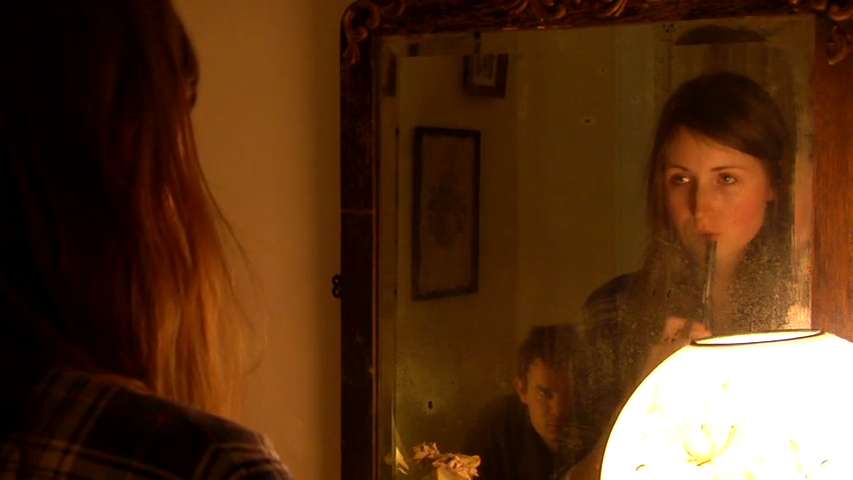 Joe
Swanberg is one of the most interesting, and divisive directors to come out of
cinema in recent years. Quality of his work fluctuates from great to poor
regularly, however in 2011, Swanberg took a decisive turn in style and themes. Silver Bullets (part of his Moon
trilogy) was a huge step forward in his work.
Joe
Swanberg is one of the most interesting, and divisive directors to come out of
cinema in recent years. Quality of his work fluctuates from great to poor
regularly, however in 2011, Swanberg took a decisive turn in style and themes. Silver Bullets (part of his Moon
trilogy) was a huge step forward in his work.
33. Alps (2011, Giorgos Lanthimos)
Lanthimos
stormed into the scene with his bizarre Dogtooth,
a film so weird that it pushed him to the forefront of the so-called ‘Greek
Weird Wave’. What was even stranger however, was how his follow-up, Alps, has been quickly ignored. Bigger
and bolder, Alps demonstrates that
Lanthimos is not a one-hit-wonder.
32. Drive (2011, Nicolas Winding
Refn)
Drive becomes an even more
interesting film when compared to Refn’s follow-up, Only God Forgives. They both look, and feel similar, but Drive proves itself full of content that
can span a whole film, whereas the latter flickers in very short moments, and
leaves lead actor of both films, Ryan Gosling, floundering around. Drive gets hearts racing.
31. Gone Girl (2014, David Fincher)
Fincher
proves that he can take the absurd and make it feel completely plausible. Fincher’s
latest continues his love of taking modern, extreme stories and applying
old-Hollywood styles alongside slick, modern directorial choices.
30. Present Company (2010, Frank V.
Ross)
With
all the talk of Mumblecore in 2000s, and ‘next-Cassavetes’ talk, Frank V. Ross
has independently grown into the closest there is to that statement, providing
the most human and honest films to come out of American for years. Each of his
films could quite easily be classed as an American independent masterpiece, but
Present Company speaks to me on a
personal level more than almost any other film has.
29. Paradise: Love (2012, Ulrich
Siedl)
Siedl
has nailed making the pretty look ugly, and the ugly look even uglier. Love, part of his Paradise trilogy
stands-out amongst the three however as it takes Kenya, and refuses to eroticise
or romanticise the place. Where other directors would look for the exciting
African landscape, Siedl instead focuses on the good and bad of human nature
that does not stop at any boarder.
28. The Arbor (2010, Clio Bernard)
Bernard’s
verbatim documentary/re-enactment of the life of Andrea Dunbar is about as bold
as anything that has come out of the UK. Her decision to film in this way
enhances an already moving story.
27. The World’s End (2013, Edger
Wright)
Wright
takes on the Americanisation/Globalisation of culture with a traditionally
frantic and full-blooded sci-fi comedy. The finale of his Cornetto trilogy is
perhaps the best of the bunch.
26. Beasts of the Southern Wild
(2012, Benh Zeitlin)
Benh
Zeitlin burst onto the scene with his debut feature, and then faced an inevitable
backlash as the film blew-up in even more with Cannes and the Oscars. What
however remains at the heart is a powerful story told by an amazing young
actress. Zeitlin remains at her level, refusing to dumb-down for her, but rather
presenting a platform.
25. The Girl With The Dragon Tattoo
(2011, David Fincher)
Fincher
produced another police procedural, and again showed he is a master of details.
Many similarities can be made to the earlier Zodiac, and the later Gone
Girl, but it is far more than just a stepping stone between the two.
Fincher has proven himself to be the master of modern Hollywood.
24. Blue Jasmine (2013, Woody
Allen)
Woody Allen
returned back into the mainstream with Midnight
in Paris, however its Blue Jasmine that
presents his most moving and daring piece of recent years. An unflinching look
at depression and broken relationships took Allen into territory he seemingly
left behind.
23. Faust (2011, Aleksandr Sokurov)
With
slow and distorted images, Sokurov takes the tale of Faust into new places. Sokurov
uses his images to add to an already uncomfortable and uneasy story.
22. Upstream Color (2013, Shane
Currath)
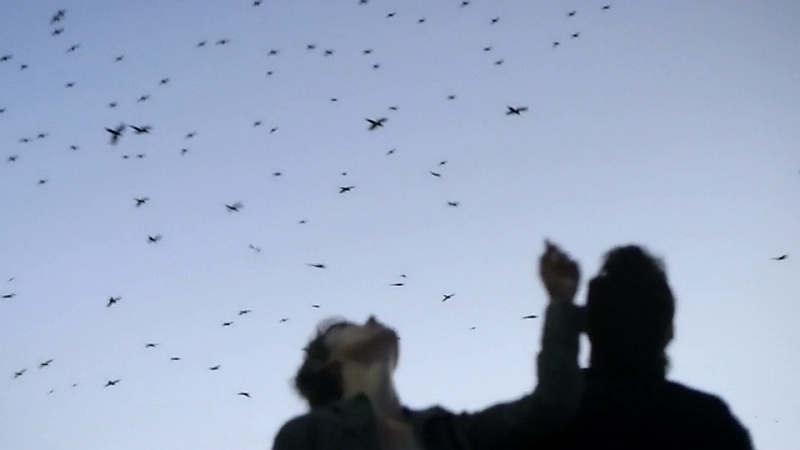 Currath
appeared, and disappeared just as quickly after the release of his debut Primer. 9 years later he re-appeared
seemingly out of nowhere to produce a kaleidoscope of images, sounds and
thoughts. Currath makes films that look like they are filmed on a budget
Christopher Nolan would get, and makes films that Nolan looks like he is
striving to make. Currath shows that the possibilities are endless no matter
what the budget is.
Currath
appeared, and disappeared just as quickly after the release of his debut Primer. 9 years later he re-appeared
seemingly out of nowhere to produce a kaleidoscope of images, sounds and
thoughts. Currath makes films that look like they are filmed on a budget
Christopher Nolan would get, and makes films that Nolan looks like he is
striving to make. Currath shows that the possibilities are endless no matter
what the budget is.
21. Before Midnight (2013, Richard
Linklater)
The
completion of one of Linklater’s long-term project neatly wrapped up a story
that now takes place in a world miles away from where it began. Linklater
allows space for his characters, and in turn allows the audience to remember
and be part of his characters. A simple idea sometimes makes the most powerful.
20. Frances Ha (2012, Noah
Baumbach)
Frances Ha made me feel something I rarely
feel with films, ecstatic that the lead character had a happy, neatly wrapped
up ending. Frances is such a endearing person, its impossible not to want her
to succeed. Beautifully shot as well by Baumbach.
19. The Great Beauty (2013, Paolo
Sorrentino)
Harking
back to the films of Fellini, The Great
Beauty brings us a sexed and a money-soaked representation of Rome.
Sorentino captures moments of extreme beauty and surrealism, and is held
together by Toni Servillo.
18. The Wolf of Wall Street (2013,
Martin Scorsese)
Scorsese
went full extreme with his drug, sex and money story of Jordan Belfort. Almost
the polar opposite of his previous film, Hugo,
Scorsese ramped it up and gave three hours worth of some of the funniest,
shocking cinema to come out of mainstream cinema since his own heydays of the
70s.
17. The Zone (2011, Joe Swanberg)
Swanberg
has always been explicitaly self-aware with his work, facing critics head-on
(sometimes literally). Swanberg however took this to a new level, as he
deconstructs himself as he goes in The
Zone, before finally pulling up the rug towards the end. The Zone shows Swanbergs ability adapt
to new styles, even those he doesn’t necessarily wish to do.
16. Black Swan (2010, Darren
Aronofsky)
 Aronofsky,
another director who is seemingly easy to hate, took a rather well worn story
with commonly used themes (ballet, doubles, obsession), but made it completely
his own. Black Swan is consistently creepy
and unsettling, an even more challenging task when using a story well-worn.
Aronofsky work has often been patchy, but Black
Swan is one of his highlights.
Aronofsky,
another director who is seemingly easy to hate, took a rather well worn story
with commonly used themes (ballet, doubles, obsession), but made it completely
his own. Black Swan is consistently creepy
and unsettling, an even more challenging task when using a story well-worn.
Aronofsky work has often been patchy, but Black
Swan is one of his highlights.
15. Amour (2012, Michele Haneke)
Haneke
can do no wrong currently. Amour is
an incredibly simple story, however full of complicated ethical issues that
Haneke ensures are dealt with at arm’s-length, never leading its audience. An
ending that is bound to stick with you, Amour
adds another film to Haneke’s oeuvre of films other directors would be
lucky to make in a life-time.
14. The Color Wheel (2011, Alex
Ross Perry)
A true
independent, Alex Ross Perry is the leading director to fully emerge from the
2010s. His debut, Impolex, was
relatively swept under the carpet, however The
Color Wheel left little doubt of his talent. Conversations that seem to
have little impact suddenly come rushing back later on in The Color Wheel. Perry shows an understanding of film few other
directors could.
13. Beyond The Hills (2012,
Cristian Mungiu)
Showing
that the Romanian New Wave of cinema that dominated the 2000s was not completely
gone, Mungiu adapts a true horror story and applies his staple sparse shots and
unflinching images. What comes by the end is an exorcism story unlike many any
before it. Mungiu creates a film that perfectly re-creates the feeling that it
is set in another place or time.
12. Shame (2011, Steve McQueen)
With
the powerful debut, Hunger, under his
belt McQueen moved on with a story of addiction and sex. McQueen applied, what
has now become his go to traits of, extended scenes and a refusal to turn the camera
way where others might. Shame has
rather falling between the crack of his first and third film, however shows a
clear progression of technique and style in his work.
11. Boyhood (2014, Richard
Linklater)
Very
little has to be said about Linklater’s 12 year project. A film that seamlessly
merges times and moments together to create a collage of scenes showing the
growth from child to adulthood. Although not faultless (the forced Mexican
character who the lovely white family helped still grates me), Linklater shows
an ambition many wouldn’t other have thought possible. Many have (correctly)
pointed out that just because of the long gestation of the project, the film doesn’t
therefore automatically create a ‘masterpiece’, however what Linklater, and all
film-makers should be encouraged to do is take cinematic risks that challenge
all things from its structure, to its creation process. Boyhood does that.
10. The Selfish Giant (2013, Clio
Barnard)
Barnard
proved her ability to change her style with her own powerful take on a staple British
film, the social-realist take on a kids life. Barnard elevates the work with
her ability to bring the best at of her two main young leads, and her
willingness to stand back and allow the story to unfold. Barnard has proved
herself to be one of the best British directors working currently.
9. Listen Up Philip (2014, Alex
Ross Perry)
Alex
Ross Perry followed up his breathtaking The
Color Wheel with an even more impressive feature. Listen Up Philip is full of horrible people, doing horrible things,
unflinchingly so. All of this is elevated but the photography of Sean Price
Williams, whose use of extreme close-ups gives us what is perhaps the closest
we will get to a modern-day Cassavates. That is not to say it is nothing more
than a replica, but rather an extension, a new take on the form. An independent
masterwork.
8. Margaret (2011, Kenneth
Lonergan)
Margaret had everything going against
it, lawsuits, delays and interference by Fox Searchlight. Once it was finally
released however, despite attempts to sweep it under-the-carpet, Margaret emerged as a powerfully formed
human drama. While watching, just like Lisa (played amazingly well by Anna
Paquin), the full nature of what had proceeded emerged at the same time as her
character. Rarely has one scene changed everything thats came before it, as the
opera scene does in Margaret.
7. Scott Pilgrim vs. The World
(2010, Edgar Wright)
The
most thoroughly enjoyable director working currently, Wright took the comic
book film in completely the opposite direction of any other. The comic book
movies being released every summer since the 2000s have always attempted being
more ‘serious’, and ‘dark’ than the previous, thanks to the Batman series of
Christopher Nolan. Scott Pilgrim vs. The
World however embraces the comic book for all of its extremes, adds in
computer games for extra fun, and gives cinema the best showing of children
born in the late 80s/early 90s it has seen.
6. Goodbye To Language 3D (2014,
Jean-Luc Godard)
Goodbye To Language 3D literally made my eyes move in
ways I didn’t know they could. I’ve never been particularly against 3D cinema,
but have felt that there has never been a film that actually use 3D. Having objects jump out at you,
or for it to ‘add depth’ barely constitutes using 3D. Godard however uses the
camera in ways that have never been done before, overlaying images, showing us
two images at one time. 3D needed someone to start laying down some form to its
use, and Godard seems to have place foundations for it.
5. The Turin Horse (2011, Béla
Tarr)
Tarr
signed off with in style, with a simple story of a family and their horse. What
it does however is show life in a place and time that seems almost unreal in
comparison to today. The Turin Horse feels
cold, windy and brutal, and its repetitive nature can only make you thankful
that you aren’t from that time or place. While this could (understandable) push
audiences away, I found myself more and more drawn in. How did they just, carry
on? Tarr has always been divisive with his work, and The Turin Horse is perhaps the most divisive of his work.
4. 12 Years A Slave (2013, Steve
McQueen)
12 Years A Slave’s success is simultaneously
strange and understandable. It comes out with a (relatively) happy ending, a
touch of liberal guilt and some nice white characters. These are all things
that would reaffirm a certain type of informal ‘quota’ that Hollywood feels the
need to promote in regards to ‘non-white’ films. But it is brutal, perhaps the
most brutal telling of slavery since Roots.
Telling a story of a man kidnapped from within America is a story that hasn’t
been looked at before, McQueen has a fascinating ability to find subjects that
are common (Troubles in Ireland, addiction, slavery), but take them to new,
untold places.
3. Under The Skin (2013, Jonathan
Glazer)
 Completely
weird, completely unique. Under The Skin is
an alien film, making you feel like the alien. Alongside an incredible score by
Mica Levi, Glazer makes Scotland look like another planet, where everything
looks slightly off kilter and odd. Nothing makes complete sense, for both the
audience and the woman played by Scarlett Johansson. Glazer’s creative risks
completely pay-off, completely stripping down the book its adapted from, using
non-actors, hidden cameras. Under The
Skin looks like the past and future of film.
Completely
weird, completely unique. Under The Skin is
an alien film, making you feel like the alien. Alongside an incredible score by
Mica Levi, Glazer makes Scotland look like another planet, where everything
looks slightly off kilter and odd. Nothing makes complete sense, for both the
audience and the woman played by Scarlett Johansson. Glazer’s creative risks
completely pay-off, completely stripping down the book its adapted from, using
non-actors, hidden cameras. Under The
Skin looks like the past and future of film.
2. Gravity (2013, Alfonso Cuaron)
The
perfect example of what a big-budget Hollywood blockbuster should be. The work
of Lubezki is clearly a huge factor in the film, giving it the feel of floating
in space alongside the characters, spinning around, upside down and so on. But
it is not just a visual ride that makes Gravity
great. There are questions of death and rebirth, self-sacrifice. These are
themes that are rarely dealt with in a high-end blockbuster. Its subsequent success
will hopefully encourage others to take more risks with themes in Hollywood.
1. The Tree of Life (2011,Terrence
Malick)
An
unquestionable masterpiece. The Tree of
Life takes on everything to do with life and death. Malick shows moments in
childhood that may seem insignificant at the time, but form who you are. First
steps, first loves form a mosaic of a grand picture. Similarities can be drawn
to Boyhood in terms of the story of
aging, but whereas Boyhood is far
more strict in its form, Malick shows us moments out of sync, creating film
that feels more like a memory than anything. The now infamous creation
sequence, to me, staples the piece together. It shows how these moments can be simultaneously
significant (to those who experience it), and insignificant (when compared to
the scale of the universe and its own ‘growing-up experience). We are both
important, and unimportant. And sooner or later, nothing more than
half-remembered moments.








